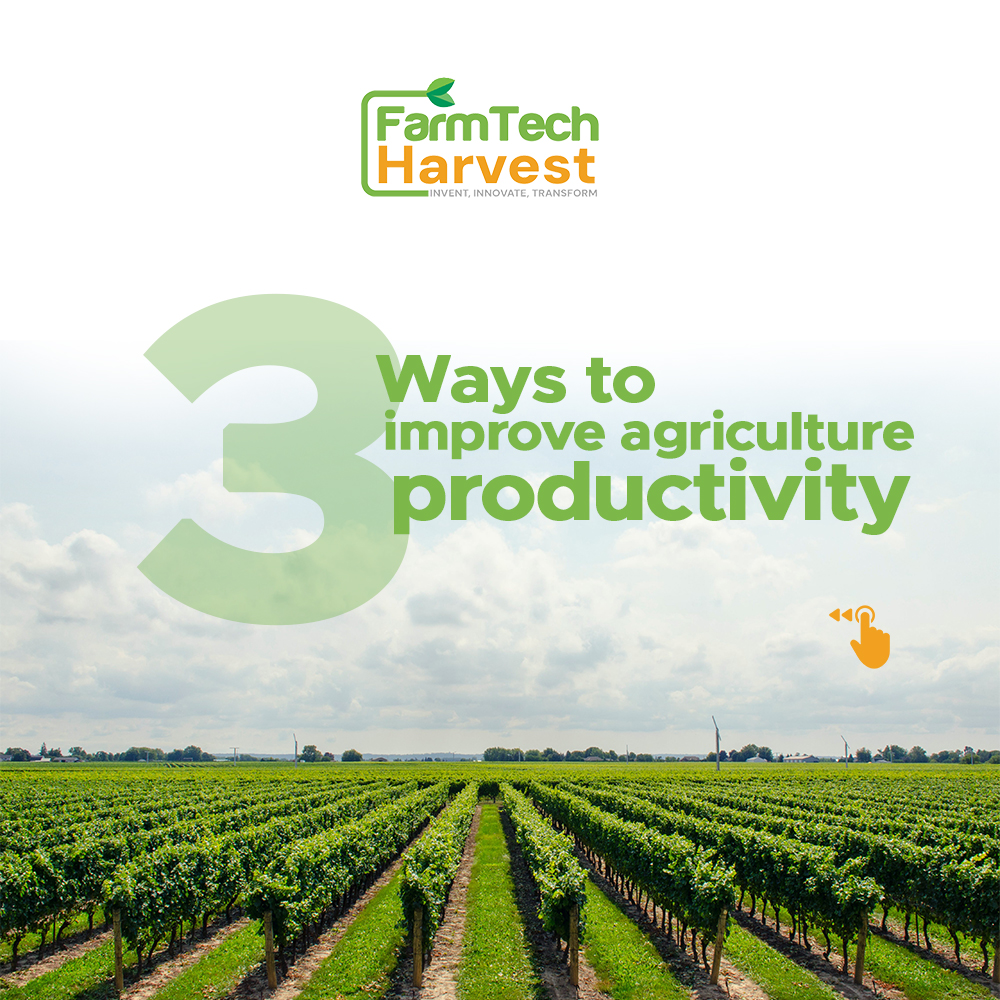Agriculture productivity is the amount of food produced per unit of input, such as land, labor, and capital. It is an important measure of the efficiency of the agricultural sector and a key determinant of food security.
A growing population and climate change are putting increasing pressure on agricultural resources. It is therefore essential to find ways to improve agriculture productivity to meet future food needs.
Here are three key ways to improve agriculture productivity
1. Invest in research and development
Research and development (R&D) is essential for developing new and improved agricultural technologies, such as high-yielding crop varieties, disease-resistant livestock, and more efficient irrigation systems. These technologies can help farmers produce more food with fewer resources.
For example, researchers have developed new varieties of rice that are more resistant to drought and salinity. These varieties can help farmers in developing countries grow more rice in challenging environments.
Governments and the private sector should invest in R&D to support the development of new agricultural technologies. This will help to improve agriculture productivity and ensure a sustainable and food-secure future.
2. Improve access to agricultural inputs and services
Farmers need access to affordable and high-quality agricultural inputs, such as seeds, fertilizers, and pesticides, in order to produce high yields. They also need access to services such as credit, extension, and market information.
Governments and development organizations can help farmers improve their access to inputs and services by providing subsidies, loans, and training programs. They can also invest in rural infrastructure, such as roads and irrigation systems, to make it easier for farmers to get the supplies and services they need.
For example, the Indian government provides farmers with subsidized seeds and fertilizers. This helps farmers reduce their costs and increase their profits.
Improving farmers’ access to inputs and services is essential for improving agriculture productivity and reducing poverty and hunger.
3. Reduce post-harvest losses
Post-harvest losses are food losses that occur after crops have been harvested but before they reach consumers. These losses can be caused by pests, diseases, poor storage and transportation facilities, and inadequate processing and marketing infrastructure.
Post-harvest losses can be significant, accounting for up to 40% of agricultural production in some developing countries. Reducing post-harvest losses is therefore an important way to improve agriculture productivity and food security.
Governments and development organizations can help farmers reduce post-harvest losses by investing in storage facilities, transportation infrastructure, and food processing facilities. They can also provide farmers with training on how to properly harvest, store, and transport their crops.
For example, the African Development Bank is funding a project to improve post-harvest handling and storage facilities in Tanzania. This project is expected to reduce post-harvest losses by 20%.
Reducing post-harvest losses is a win-win for farmers and consumers. It helps farmers to increase their incomes and consumers to have access to more affordable and nutritious food.
Improving agriculture productivity is essential for feeding a growing population and ensuring a sustainable and food-secure future. By investing in research and development, improving access to agricultural inputs and services, and reducing post-harvest losses, we can help farmers to produce more food with fewer resources.

